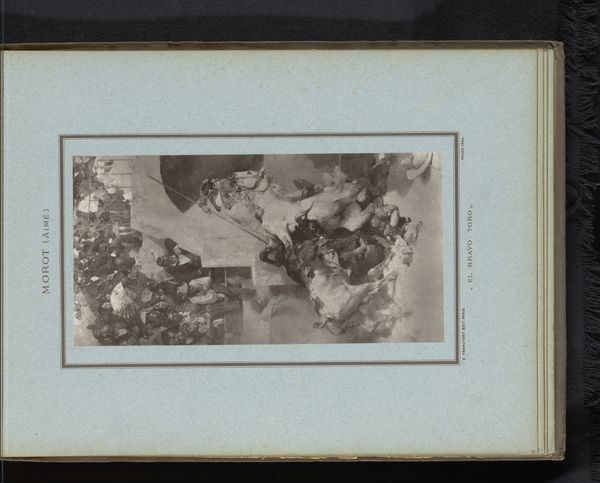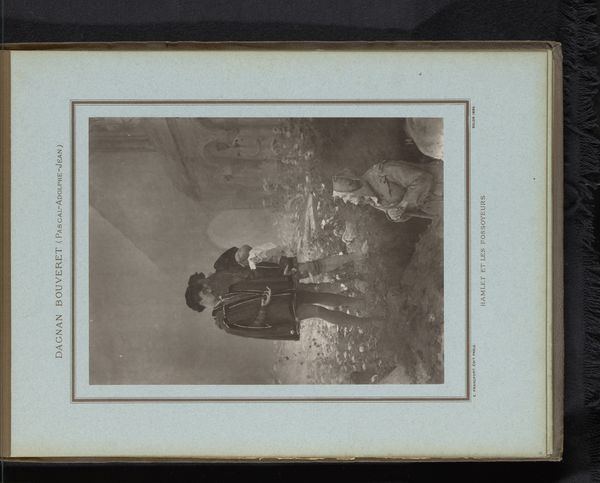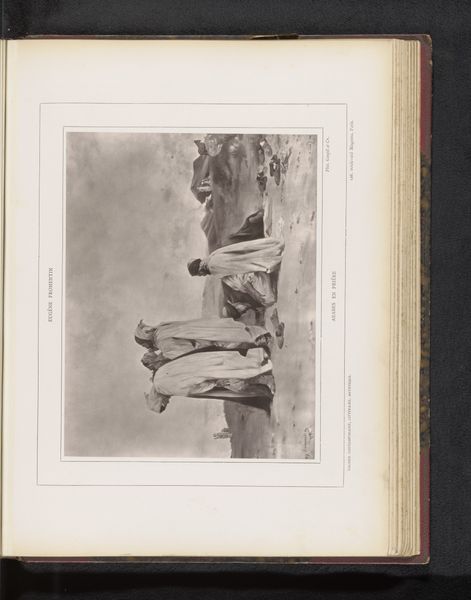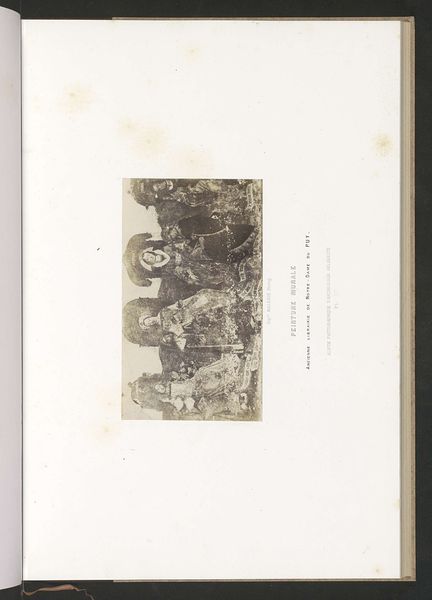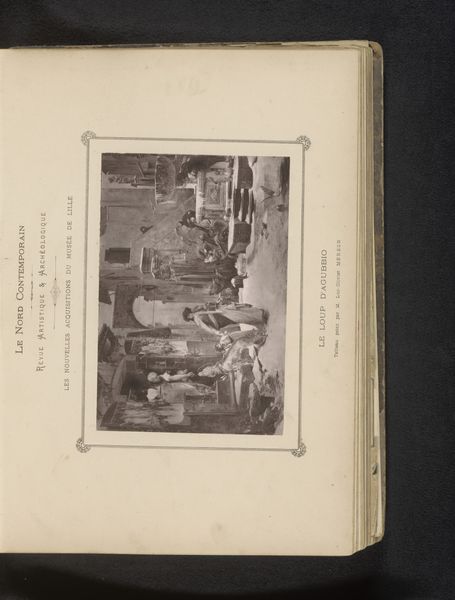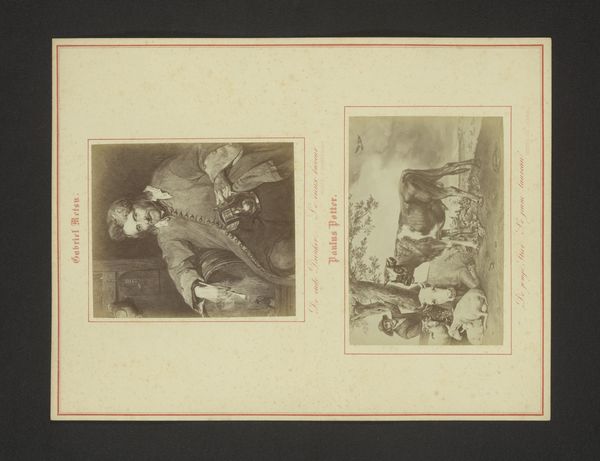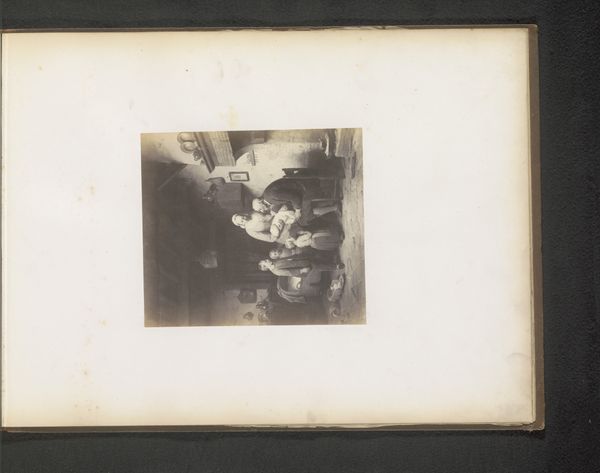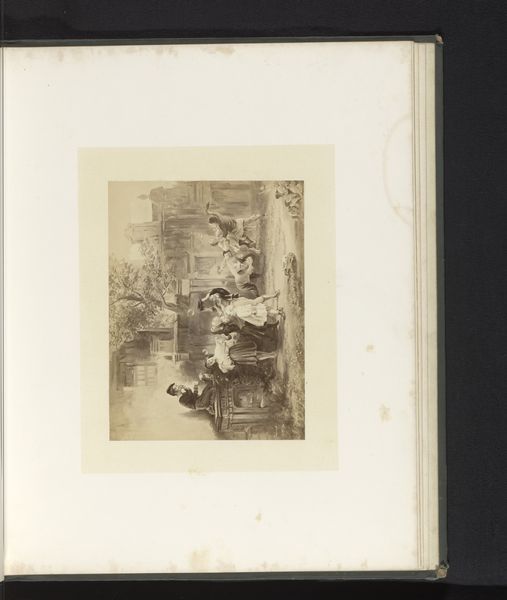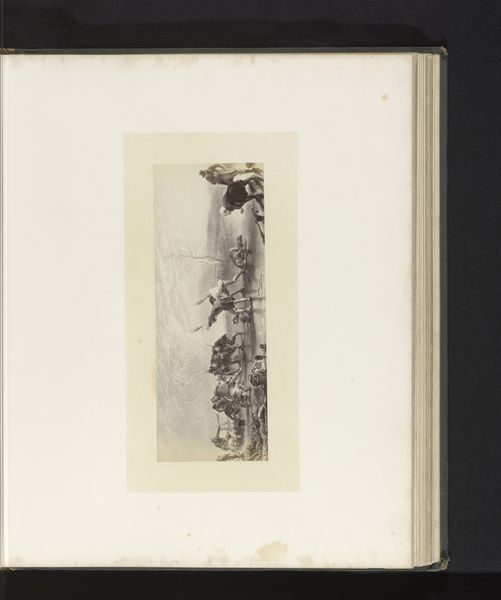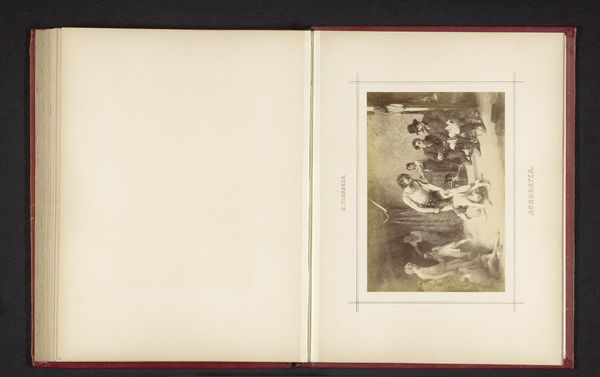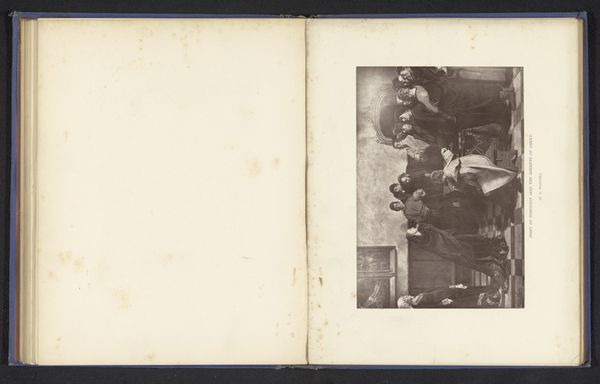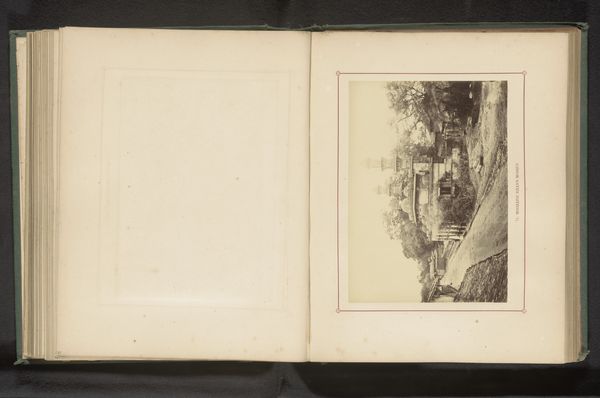
Reproductie van een schilderij van de huurlingen van Carthago door Gustave Surand before 1884
0:00
0:00
painting, print, etching
#
painting
# print
#
etching
#
history-painting
#
academic-art
#
watercolor
Dimensions: height 210 mm, width 198 mm
Copyright: Rijks Museum: Open Domain
Curator: Up next, we have a reproduction of a painting called 'Mercenaries of Carthage' by Gustave Surand. It appears to be an etching, or perhaps a print based on a painting. What strikes you initially? Editor: Wow, just a lot going on, isn't it? My eye jumps all over the place. It feels both dynamic and, dare I say, a tad chaotic? Almost like witnessing a brewing storm or a really intense history lesson. Curator: That's a good reading. The original painting would have certainly been operating within the academic art style of its time. The piece depicts a historical event, probably dramatized a bit for maximum impact, playing with the spectacle of mercenary warfare. The production of the reproduction—the print itself—speaks to a certain popular interest in historical subjects and the dissemination of images in pre-digital times. Editor: Absolutely. There's a strong sense of drama and also, in its own way, this reproduction allows for much wider circulation of these history paintings, and also detaches it from a high art object, so, thinking about who would own such a print, compared to a one-off academic painting... that shifts things somewhat? I can see this above someone’s fireplace easier, perhaps. It is fascinating how etching allows the masses to witness these historical and sometimes propagandistic scenes. Curator: Precisely! Think of the material implications: the paper, the ink, the press… the distribution networks required to reach those fireplaces you mention. Editor: The detail is pretty remarkable given the medium and scale. Makes you think about the craftsmanship involved in the printing, like how each print captures so many smaller characters engaged in what looks like all-out chaos and battle. Curator: It truly speaks to how artists and printers navigated the technical challenges of image reproduction during that era. Before 1884 as a dating means its right on the cusp of some major reproductive paradigm shifts. The social and economic contexts were critical. The etching process allowed for multiple reproductions to be created from a single plate, fueling an appetite for historical scenes, moral lessons and idealized views. Editor: I think it makes this type of distribution very interesting, even subversive for its time... democratizing the act of observing grand, narrative moments. Makes me want to investigate similar reproductive processes! Thanks for sharing all your insights with me. Curator: And thank you! Looking through that lens adds layers to our interpretation.
Comments
No comments
Be the first to comment and join the conversation on the ultimate creative platform.
